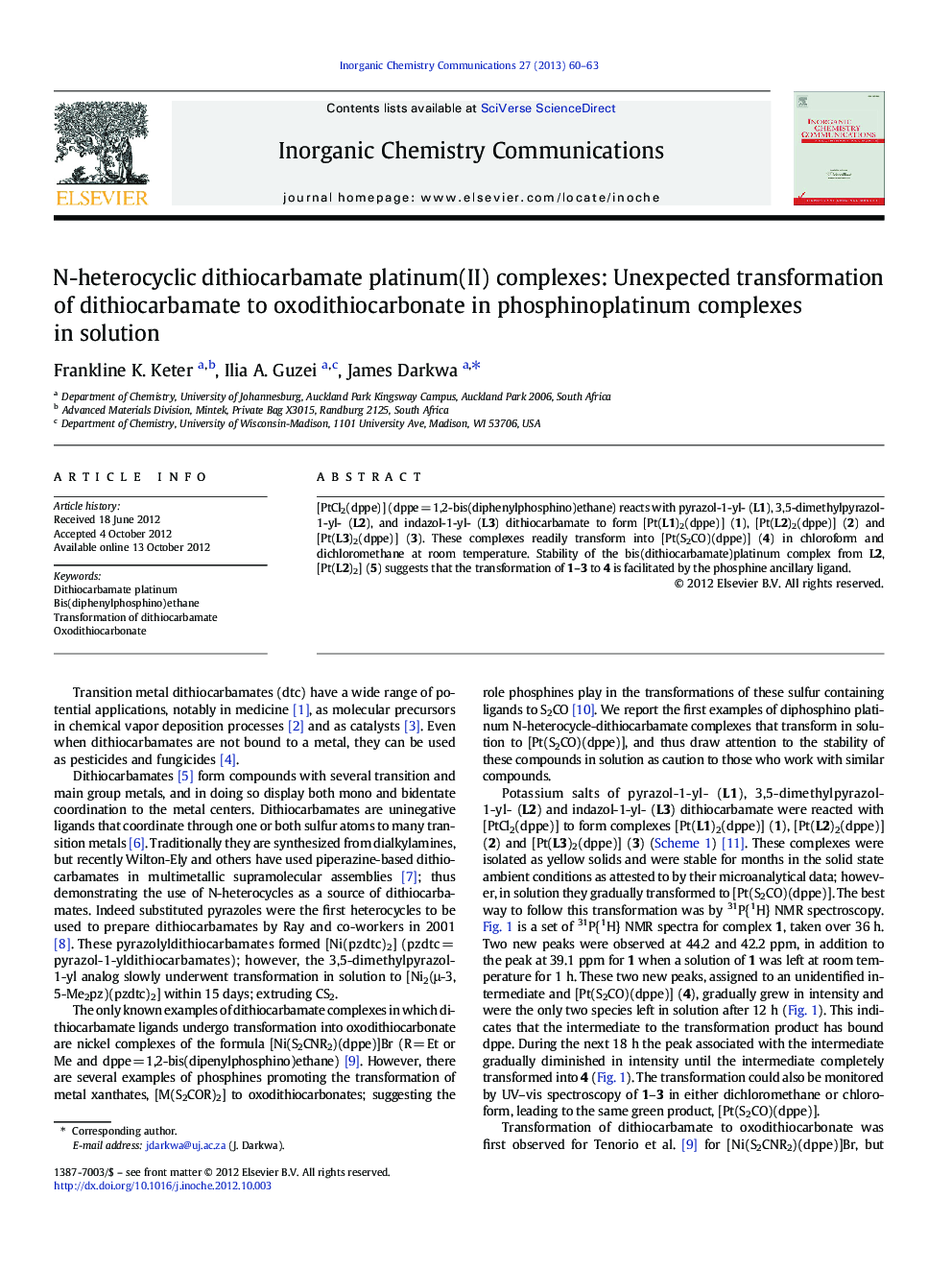| کد مقاله | کد نشریه | سال انتشار | مقاله انگلیسی | نسخه تمام متن |
|---|---|---|---|---|
| 1305569 | 1498963 | 2013 | 4 صفحه PDF | دانلود رایگان |

[PtCl2(dppe)] (dppe = 1,2-bis(diphenylphosphino)ethane) reacts with pyrazol-1-yl- (L1), 3,5-dimethylpyrazol-1-yl- (L2), and indazol-1-yl- (L3) dithiocarbamate to form [Pt(L1)2(dppe)] (1), [Pt(L2)2(dppe)] (2) and [Pt(L3)2(dppe)] (3). These complexes readily transform into [Pt(S2CO)(dppe)] (4) in chloroform and dichloromethane at room temperature. Stability of the bis(dithiocarbamate)platinum complex from L2, [Pt(L2)2] (5) suggests that the transformation of 1–3 to 4 is facilitated by the phosphine ancillary ligand.
Bis(diphenylphosphino)platinum(II) chloride reacts with heterocycle-based dithiocarbamates as ligands to form platinum complexes, which in solution, readily transform the dithiocarbamate ligands into oxodithiocarbonate.Figure optionsDownload as PowerPoint slide
Journal: Inorganic Chemistry Communications - Volume 27, January 2013, Pages 60–63